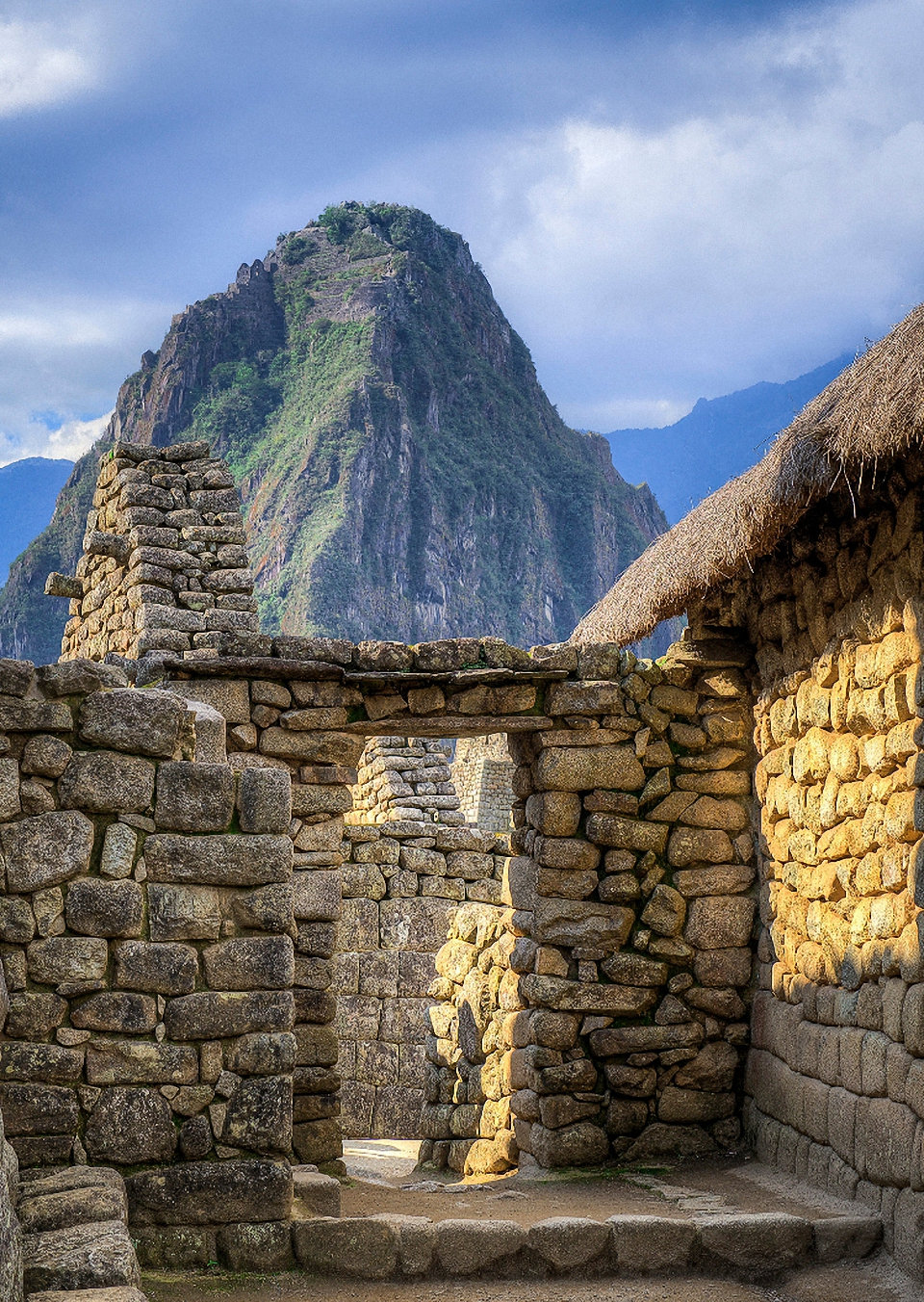
Machu Picchu, Cusco, Titicaca, Nazca, Lima, Paracas, Arequipa & Colca
14 Days / from $2,004

Cusco, (also spelled Cuzco or Qosqo), endures as one of the undisputed highlights of South America, an unforgettable vacation destination in 2025. According to Inca mythology, the two mile-high Spanish Colonial city sprung from the naval of the earth. Book your Cusco tours today!
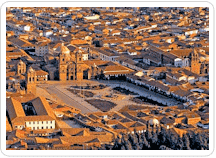
This storied capital offers the complete package. The gateway to the Inca Citadel Machu Picchu is a dynamic mix of traditional Andean culture and innovative modern amenities — world class restaurants, hotels and boutiques.
Its unique character is preserved in a vibrant indigenous culture. You can feel it, strolling along the narrow side streets, past massive carved stone foundations inter laid with inexplicable perfection by the Inca more than five centuries ago.
While most visitors head straight from Cusco to Machu Picchu, the city itself offers a cornucopia of fascinating attractions and activities.
There are also dozens of round trips from Cusco. Choose among several day trips to Inca and pre-Inca archaeological sites. Or you can opt for one of the multi-day hikes with camping in verdant valleys and along the slopes of majestic mountains that are still venerated in the local culture as Apu deities.

The historic center of Cusco, declared a World Heritage Site by UNESCO in 1983, stands at an altitude of 11,175 feet (3406 meters) above sea level. The foundations of the buildings are a mix of original Inca stonework, mortarless masonry undertaken by native craftsmen just after the Spanish Conquest and colonial architecture.
The Plaza de Armas during the time of the Inca was called Huacaypata (“the place of tears”) and formed one half of a huge civic square that straddled the Saphi River. On the other side of the now underground waterway was Cusipata (“the place of happiness”), which today is the Plaza Regocijo.
The main plaza flanked by colonial arcades filled with shops, ATMs, bars, cafes and restaurants. On the northeastern side of the square are three churches. They are contained within the complex of the 17th century baroque cathedral, erected atop the foundation of the Inca palace of Inca Wiracocha.
On the southeast side of the plaza is the church of La Compañía de Jesús, built on the toppled residence of the Inca Huayna Cápac, the “Palace of Serpents.”
Coricancha & Santo Domingo Convent is a magnificent monument that shows the fusion of Spanish and Inca architecture. It also provides tactile, stone-hard insight into the divergence of the Inca cosmovision and the Catholicism that the church and Conquistadors imposed.
During the time of the Inca, the Coricancha was the spiritual center of the empire, the middle of Tawantinsuyu, where the four corners of the world converged — the navel of the universe. Coricancha (aka Koricancha or Qoricancha) means “courtyard of gold” and that is exactly what the Spanish beheld when they first laid eyes on the glimmering temple complex.
Massive, gold plated walls caught the rays of the setting sun. The gold was stripped in order to pay the ransom demanded by the Spanish for the release of their hostage, the Inca Atahualpa.
After looting Inca temple, Conquistador Juan Pizarro turned it over to the Dominicans in 1536. The monks constructed the church and monastery over the temple ruins. The monks rebuilt Santo Domingo after a devastating earthquake struck in 1650, and again after another powerful quake 1950. That one revealed parts of the original Inca shrine to the Sun. [BTC Entry for Site Museum on Avenida el Sol — For Coricancha entrance ticket sold directly at Santo Domingo Church Entrance]
Sacsayhuaman, the Inca fortress temple, with its cyclopean terraced zig-zagging walls, is one of the greatest structures ever erected! And that is in spite of the fact that the Spanish dismantled the towers, palace and store houses to use the masterfully hewn stones as foundations for new buildings and churches in Cusco. The megalithic architecture simply astounded observers from the time of the Spanish Conquest and continues to do so today. [BTC Entry]
Qenko, Puka Pukará and Tambomachay are Inca structures located just beyond Sacsayhuaman. Qenqo (“labyrinth” in the Quechua language) was the site of ceremonies, including blood sacrifices, to venerate the sun, moon and stars.
Puka Pukará is believed to have been a military customs house, strategically located for controlling entry into the Inca’s imperial capital. And Tambomachay is a still-functional Inca shrine of fountains and canalized waterways that venerate life-giving water for agriculture and the regeneration of the Pachamama (Mother Earth). [BTC Entry]
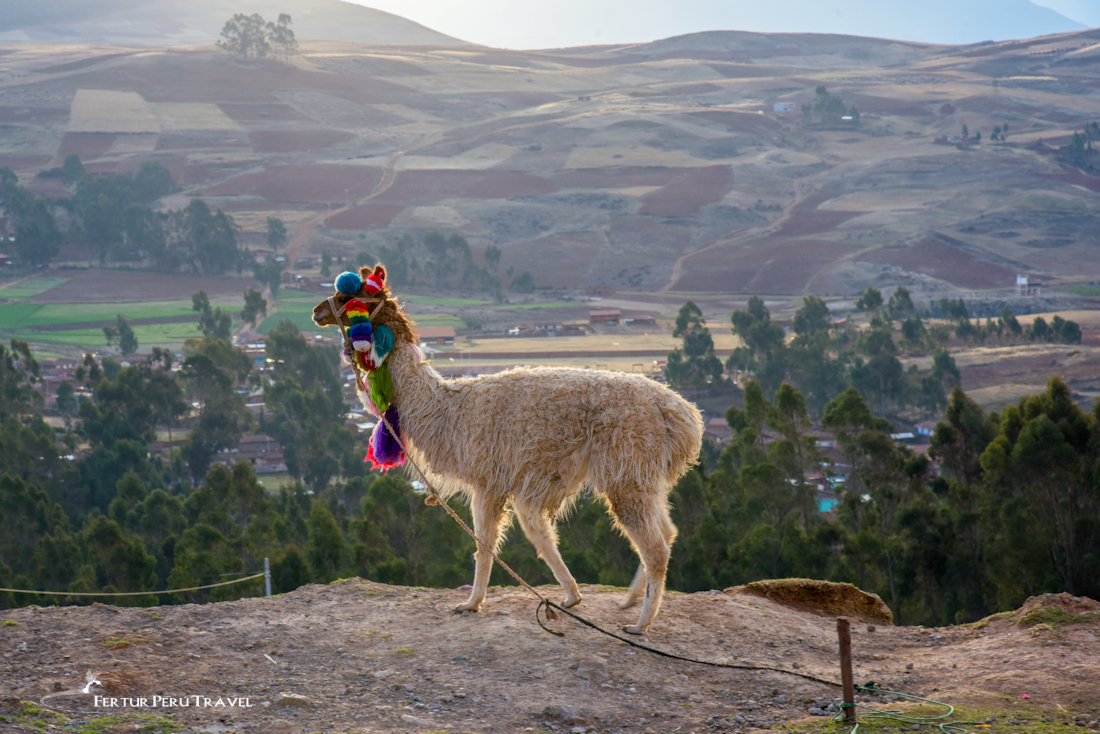
Some of the most common Cusco excursions are found in the Sacred Valley of the Inca. That is in part because the historic towns, ancient agricultural terraces and massive Inca archaeological complexes that line the length of the Urubamba River valley form the principal geographic gateway to reach Machu Picchu.
The first destination for most travelers going from Cusco to the Sacred Valley is Pisac, a bustling village with one of the most famous open air artisan markets in South America.
On any given day, but most notably on Sundays, the market buzzes with bargain-hunting visitors in search of colorful local handicrafts, high quality alpaca weavings and sweaters and unique trinkets among a huge assortment of souvenirs.
High above the town, ringing the mountain, is the sprawling Pisac archaeological complex. The largest known Inca fortress-city-temple, Pisac was built by the empire’s greatest ruler, Pachacutec, in the 15th century and retains marvelous examples of Inca stonework and architecture that rivals even Machu Picchu. [BTC Entry]
Ollantaytambo one of the most significant and extensive archaeological complexes of the Inca Empire. The adjacent town contains some of the oldest continually occupied dwellings in South America.
The Spanish believed the mountainside complex overlooking the town to be a fortresses because of their extraordinary walls and 17 imposing terraces built into the steep hillside to a massive stone Sun Temple.
But Ollantaytambo was actually just a town and ceremonial center strategically located to take full advantage of the convergence of the Patakancha and Urubamba river valleys. The town was built by the emperor Pachacutec to serve as a royal estate. Extensive, functioning Inca waterworks survive, including a fountain at the base of the ruins, known as “The bath of the princess.” [BTC Entry]
Maras & Moray and Chinchero, the triumvirate destinations located on the stunningly gorgeous plateau that runs parallel to the Vilcanota River and eventually slopes down to the Sacred Valley.
Chinchero was built around 1480 by Tupac Inca Yupanqui as a royal estate, and the archaeological remains survive adjacent to the colonial town and bell towered church. The Inca architectural features include a massive terrace wall, grand stone enclosures, platforms, staircases and altars.
The vistas from Chinchero on a clear day are jaw-dropping, and as-yet unaffected by the roar of jet planes taking off and landing at the controversial international airport that is under construction a few miles away. [BTC Entry]
The town of Chinchero itself is world famous for its high quality crafts, the result of a powerful revival movement of ancient weaving traditions and techniques. Weaving collectives and textile centers offer travelers demonstrations of the methods used to wash, dye, spin and weave alpaca and sheep’s yarn into magnificent wall hangings, rugs and garments.
Maras – Salineras is an ancient patchwork of thousands of salt-encrusted, terraced pools fed by mineral-rich water that cascades down from a subterranean stream inside the Qaqawiñay mountain. It is a sight to behold!
Each salt pan is tended by a local family, and passed down from one generation to the next, to harvest the salt. The deliciously distinctive salt is shipped to markets in the region, and exported abroad as a gourmet spice.
Moray is archaeological eye candy: three immense, and one smaller, set of perfect concentric circles called Muyus, monumentally carved more than 500 years ago into the terrain by the Inca. The prevailing theory is that these giant earthworks served as open air experimental greenhouses for the Inca. The lower terraces create their own micro-climates.
Moray is about 11,480 feet (3,500 meters) above sea level, but the temperature inside the structure gets so warm, you could cultivate jungle fruits on the lower terraces.
A recent study called into question this experimental agriculture theory, citing among other things that the terraces were unsuitable for farming. Analysis of soil samples did not demonstrate evidence crop cultivation or the kind of irrigation that would have been necessary. The competing theory is that the Muyus of Moray served as amphitheaters for giant gatherings to witness Inca ceremonies and rituals. [BTC Entry]
These three destinations Chinchero, Maras and Moray are commonly visited together as part of a half-day tour from Cusco, either overland in small group circuits or with a private guide, as well as on horseback or on bicycle or four-wheel ATV.
Huchuy Qosqo (“Little Cusco” in Quechua) is a fascinating Inca archeological complex built onto a high mountain plateau above the town of Lamay. Its location commands an awesome view of the Sacred Valley and the snow-covered Pitusiray peak.
The complex includes platforms, esplanades, patios, squares, and buildings, part stone and part adobe. The three principal routes to reach the ruins are all on foot. There is a hair-raising road route, involving narrow, tight switchbacks and steep drop-offs into the abyss, which is not recommended. Trekking to Huchuy Qosqo makes for a fabulous full-day hiking adventure.
The most popular route sets out from near Chinchero and can be done with horse support (which we recommend). The second trek sets out along an Inca Trail from Tambomachay. The third route is the shortest, but steepest, from the town of Lamay.
(A cable car system directly to the ruins from the town of Sacllo has been in the works, with plans to add Huchuy Qosqo to the BTC ticket, but construction remains hampered by opposition to the project from local townspeople.)

Andahuaylillas is a picturesque Spanish colonial town most famous for its Church of San Pedro Apóstol de Andahuaylillas, also known as the Sistine Chapel of the Americas. The moniker is a tribute to the rich colonial artworks and painted murals that cover the walls, arches, entrance ways and ceilings.
The proselytizing imagery provided a 360-degree backdrop to punctuate Catholic sermons in Quechua on the fate of the righteous and the damned to obliterate native Andean beliefs. The mural on the church’s main entrance wall is El Camino del Cielo e Infierno (ca. 1626) an allegorical scene depicting the diverging roads to Heaven and Hell that the native parishioners could expect to encounter upon death.
Piquillaqta is a sprawling pre-Inca constructions, built as a provincial capital by the Wari Empire, which occupied the citadel from 540 to 900 (Before Common Era). Pikillacta (or “flea-town” in Quechua) is enormous, consisting of the remains of more than 700 stone structures. The layout conforms to a rigid geometric grid, its outer boundaries forming a nearly perfect rectangle. Archaeological evidence shows many of the buildings were multi-storied. Several of the surviving walls reach heights of nearly 40 feet (12 meters). [BTC Entry]
Tipón is a vast royal Inca estate comprised of long, gorgeously constructed agricultural terraces carved into a sloping mountainside. The high retaining walls feature huge stretches of fine Inca stonework. An underground water source feeds an elaborate network of visible and subterranean hewn stone irrigation channels, a demonstration of the advanced hydraulic engineering that the Inca mastered. The water flows, filling ritual stone baths and fountains, including a main waterfall fountain carved with four separate spouts. [BTC Entry]
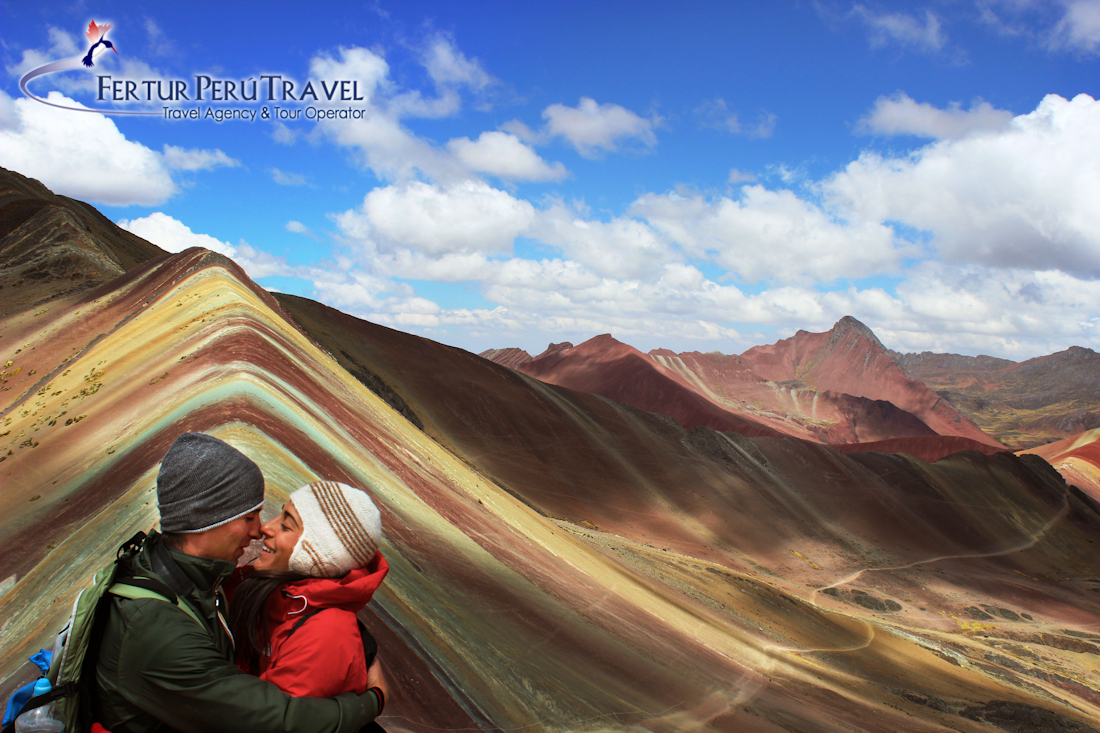
Vinicunca (also known as Cerro Colorado, K’ayrawire Wininkunka and Seven-Color Mountain) has become one of Cusco’s most popular destinations. For thousands of years its vivid stripes formed by trace minerals of iron oxide red, bright yellow iron sulphide and varying shades of chlorite green were hidden under a year-round cover of snow and ice. Melting caused by global warming revealed the panoramic kaleidoscope of color to the world.
Vinicunca’s remote, high altitude location make it a challenging sight to behold. As a day-trip from Cusco, Vinicunca is accessible via one of two trekking routes, both requiring a predawn departure and three-hour road trip. Both are also fairly arduous as you ascend to more than 17,000 feet (5,200 meters) above sea level.
This Rainbow Mountain is best hiked during the dry-season months of April through September. Making all that effort to get there during the rainy season can be hugely disappointing. When you do go, be sure to do so after you have taken a few days to acclimatize. Horse-support for the journey is highly recommended. You can also visit Vinicunca as a climactic part of multi-day trek through the ice-peaked Ausangate Mountain range.

An excellent alternative to Vinicunca is Palcoyo. At 16,047 feet (4,891 meters) above sea level, it offers very similar typography (stunningly beautiful striped mountains). It is also a thousand feet lower in altitude, and requires a much shorter, easier one-hour trek to get to it.

For anyone who tells you “It’s the journey, not the destination” in reference to Machu Picchu, they obviously have never been to Machu Picchu. However, there are a wide variety of routes and travel modes to reach the ancient Inca citadel, which range somewhere on the scale between memorably fun to wonderfully adventurous to fabulously rewarding — depending on your taste, budget and interests.
The most common way to get from Cusco to Machu Picchu and back is by rail. There are several different classes of train operated by PeruRail and IncaRail — from Top Luxury First Class Service aboard the Belmond Hiram Bingham Train or the IncaRail Presidential or the PeruRail Sacred Valley Train, to the mid-class PeruRail Vistadome or IncaRail 360 trains, and the more economical PeruRail Expedition and IncaRail Voyager trains.
The services run from and to the San Pedro Station in Cusco, the Poroy Station (11 miles/18kms north of Cusco), and the Urubamba and Ollantaytambo stations in the Sacred Valley. The ultimate destination is MachuPicchu Station in the town of Aguas Calientes, also known as Machupicchu Pueblo.
During the height of the rainy season, between January and April, PeruRail operates its “Bimodal” service, with buses operating between Cusco and the Sacred Valley. The train service runs to Machu Picchu from there. This is for safety reasons, because stretches of the rail line closer to Cusco are more exposed to landslides and flooding.
For trekking the Classic 4-Day Inca Trail, passengers take the train as far as Kilometer 82, then hop off at the trail head at Piscacucho. For the less rigorous, four-to-six hour Inca Trail hike to Machu Picchu, they get off at Kilometer 84, to pick up the trailhead at Chachabamba. The Inca Trails are closed for maintenance during the “rainy season” month of February.
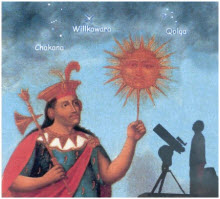
Step back into the mystical 15th century, where the Incas revered their landscape as a divine canvas, meticulously crafted in alignment with the revered ‘huacas’ — the majestic mountains, life-giving springs, sacred rocks, and powerful shrine deities. These elements were harmoniously woven into the fabric of a lunar-stellar calendar, a testament to the Incas’ deep connection with the cosmos.
Discover this enchanting world with Fertur’s exclusive 5-day Inca Astronomy Tour. Our journey takes you to the heart of Inca spirituality – Cusco, once celebrated as the ‘navel of the universe’. Here, Inca priest-astronomers skillfully read the heavens, aligning both natural and architectural wonders along the horizon, creating a celestial map that guided their culture and civilization.
As you embark on this unforgettable adventure, your path will be illuminated by the same stars that guided ancient Inca astronomers. The mystical ruins of Machu Picchu, the historic streets of Cusco, and the serene landscapes of the Sacred Valley will come alive with the Inca cosmo-vision.
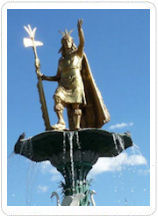
Embark on a magical four-day journey to the heart of Cusco and its awe-inspiring archaeological wonders. Perfect for those who dream of more than just a fleeting visit to the majestic Machu Picchu, this ‘Machu Picchu Extended Stay’ tour offers an immersive, unrushed experience of the ancient Inca citadel.
Dive deep into the mystical ambiance of Machu Picchu with an overnight stay. This unique opportunity allows you to explore the sacred grounds at your leisure, far from the daytime crowds. As the evening descends and the last of the morning visitors journey back to Aguas Calientes, you’ll witness the serene transformation of the ruins, basking in the tranquil beauty and undisturbed whispers of history — a perfect time for photos.
Your experience continues with a serene morning return to the ruins. Arrive before the first rays of dawn to greet the citadel in its most peaceful state, before the arrival of the day’s tourists. This is the perfect moment for reflection and connection with the spiritual legacy of the Inca, amidst the quiet and the stirring beauty of the sunrise over Machu Picchu.
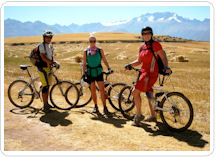
A 7-day journey that makes the most of the fact that Cusco is a mountain biker’s paradise.
Inca stone trails, farm tracks, gravel and paved roads — our routes through the heart of the ancient Andean empire offer options for all ability levels every day.
Mix single track or easy downhill road riding in any combination – and see all the highlights: Pisac, Ollantaytambo, Salineras, and of course, Machu Picchu.
Nearly all riding is downhill or along flat terrain. Whether you’re a seasoned biker or a beginner who enjoys getting around by pedal power, this trip is for you! (Fixed Departure Group Tour)
A five-day vacation package offering the best of Cusco, and full-day excursions to explore Machu Picchu, the Sacred Valley of the Inca, and the amazing Huari ruins of Piquillacta and the Andean “Sistine Chapel” of Andahuaylillas.
This four-day vacation package lets you experience the most important sites of Cusco, and explore Machu Picchu, as well as enjoy a full-day tour of the Sacred Valley of the Inca, where Quechua-speaking farmers still use hand plows fashioned from wood to harvest corn, barley, squash and beans amid the ruins of once mighty Inca fortresses and towns.
This three-day vacation package offers the highlights of Cusco, the most important historic and archaeological sites in and around the Inca capital, and a full-day excursion to explore Machu Picchu, the ruins of Inca Pachacutec’s citadel city atop a jungle mountaintop.
Different tickets provide entry to many of the museums and archaeological sites in and around Cusco. The majority of sites are covered by the BTC (Boleto Turístico del Cusco, or Cusco Tourist Ticket), of which there are four types, one complete and three partial. Single entry tickets to individual sites are not available. You must buy either the complete BTC ticket or one of the partial BTC tickets.

The complete tourist ticket encompasses all 16 of the sites included in the partial ticket options and costs 130 soles, or about USD 38.00-44.00 depending on the exchange rate. The complete ticket is valid for 10 days, making it a good choice if you are planning on being in Cusco for a week or more and plan to explore more extensively.
The partial tourist tickets cost 70 soles, or about USD 21.00-24.00, making them a good choice if your time in Cusco is limited, but you know which sites you want to experience:
There are youth discounts for 10 to 17 year olds, as well as student discounts with the presentation of proper identification (ISIC Card): Complet tourist ticket for 70 soles and partial circuit tickets for 40 soles.
Ticket for tourist entry to Cusco’s churches are not included in the BTC, but rather are administered by the Archbishopric of Cusco. Entry tickets can be purchased at the religious sites, including:
A group Religious Circuit Ticket is also available for 50 soles or USD 15.00-16.00.
There are some amazing in the city of Cusco, public and private, with great works of art, archaeological exhibits and historical artifacts. The permanent collections range from ancient Peru and pre-Columbian masterpieces to gold jewelry, traditional textiles, ceramics and world-class expressions of modern art.
To book your Cusco tours now or consult with us, fill out the “Contact Us” form and a Fertur Peru Travel coordinator will contact you within one working day with detailed information about your fully customizable trip. Fertur Peru Travel’s pledge is to offer you top-quality, individualized attention that starts with the planning of your trip and continues through your journey to guarantee a great vacation.